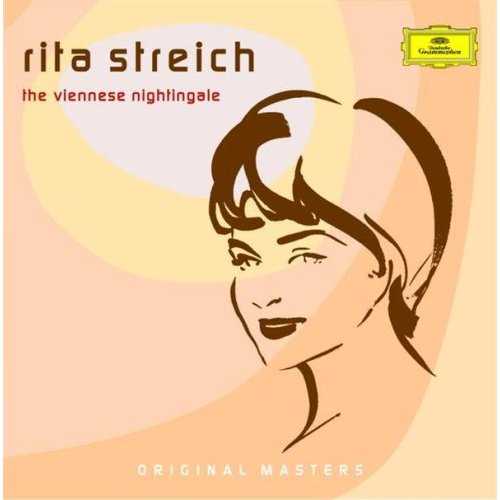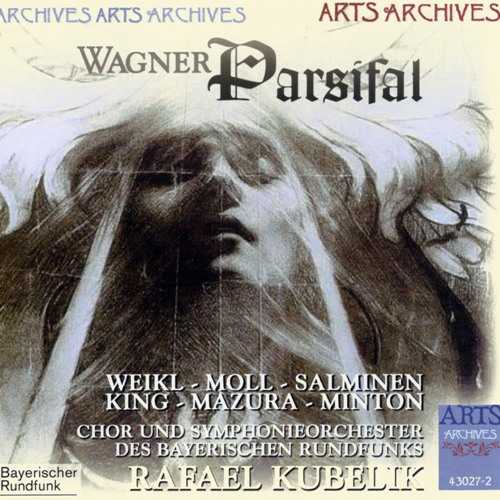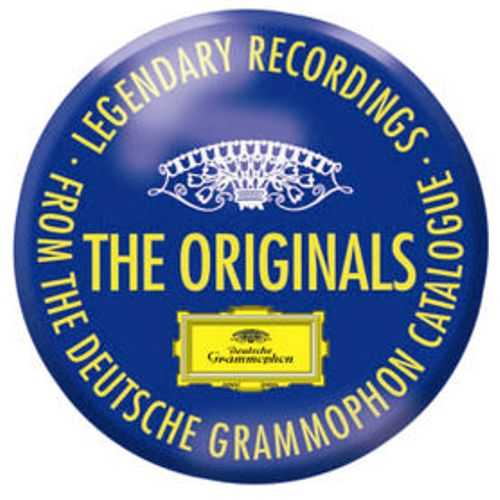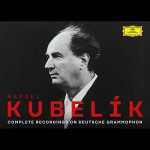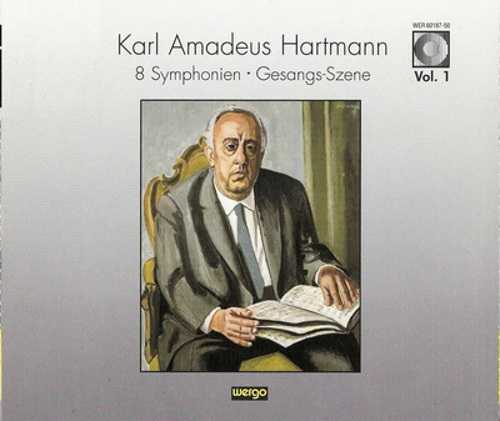
Composer: Karl Amadeus Hartmann
Performer: Doris Soffel, Dietrich Fischer-Dieskau
Orchestra: Bavarian Radio Symphony Orchestra
Conductor: Rafael Kubelik, Fritz Rieger, Ferdinand Leitner, Zdenek Macal
Audio CD
SPARS Code: DDD
Number of Discs: 4
Format: APE (image+cue)
Label: Wergo Germany
Size: 973 MB
Recovery: +3%
Scan: cover
Disc 1
1. 1. Sym: Versuch eines Requiems nach Worten von Walt Whitman fur ein Altstimme und Orch: I. Intro – Doris Soffel/SO des Bayerischen Rundfunks/Fritz Rieger
2. 1. Sym: Versuch eines Requiems nach Worten von Walt Whitman fur ein Altstimme und Orch: II… – Doris Soffel/SO des Bayerischen Rundfunks/Fritz Rieger
3. 1. Sym: Versuch eines Requiems nach Worten von Walt Whitman fur ein Altstimme und Orch: III… – Doris Soffel/SO des Bayerischen Rundfunks/Fritz Rieger
4. 1. Sym: Versuch eines Requiems nach Worten von Walt Whitman fur ein Altstimme und Orch: IV… – Doris Soffel/SO des Bayerischen Rundfunks/Fritz Rieger
5. 1. Sym: Versuch eines Requiems nach Worten von Walt Whitman fur ein Altstimme und Orch: V… – Doris Soffel/SO des Bayerischen Rundfunks/Fritz Rieger
6. 3. Sym fur grosses orch: I. Largo ma non troppo – Allegro con fuoco (Virtuose Fuge) – SO des Bayerischen Rundfunks/Ferdinand Leitner
7. 3. Sym fur grosses orch: Adagio (mit bewegtem Ausdruck) – SO des Bayerischen Rundfunks/Ferdinand Leitner
Disc 2
1. Adagio (2. Sym) fur grosses Orch
2. 4. Sym fur Streichorchester: I. Lento assai – con passione
3. 4. Sym fur Streichorchester: II. Allegro di molto, risoluto
4. 4. Sym fur Streichorchester: III. Adagio appassionato
5. Sym concertante (5. Sym) fur Orch: I. Toccata (lebhaft)
6. Sym concertante (5. Sym) fur Orch: II. Melodie (langsam)
7. Sym concertante (5. Sym) fur Orch: III. Scherzo (sehr lebhaft)
8. Sym concertante (5. Sym) fur Orch: IV. Rondo (lustig – sehr lebhaft)
Disc 3
1. 6. Sym fur grosses Orch: I. Adagio – Appassionato (Allegro moderato)
2. 6. Sym fur grosses Orch: II. Toccata variata/Presto – Allegro assai (Fuge 1 – 3)
3. 7. Sym fur grosses Orch: I. Intro und Ricercare – SO des Bayerischen Rundfunks/Zdenek Macal
4. 7. Sym fur grosses Orch: II. Adagio mesto cantando e tranquillo/Finale: Scherzoso virtuoso… – SO des Bayerischen Rundfunks/Zdenek Macal
Disc 4
1. 8. Sym fur grosses Orch: I. Cantilene/Lento assai, con passione
2. 8. Sym fur grosses Orch: II. Dithvrambe: Scherzo – Fuga
3. Gesangs-Szene zu Worten aus ‘Sodom und Gomorrha’ von Jean Giraudoux – Dietrich Fischer-Dieskau/SO des Bayerischen Rundfunks/Rafael Kubelik
hartmann_8_symphonies_gesangs_szene02.rar – 262.3 MB
hartmann_8_symphonies_gesangs_szene03.rar – 237.3 MB
hartmann_8_symphonies_gesangs_szene04.rar – 220.6 MB
WOW!
This is quite simply one of the most rewarding box sets of classical music I have ever purchased! Karl Amadeus Hartmann has to be one of the most neglected and undervalued composers of the 20th Century. His music is in turn ferocious and beautiful. This is definitely not music for easy listening. Hartmann was writing these symphonies during World War Two and the violence of that time is certainly present in this music. His musical language is sophisticated, yet never elusive. It IS highly emotional music and at the end of the 6th, 7th and 8th symphonies the listener will probably find themselves emotionally drained, such as after a great symphony of Mahler or Shostakovich. Yes, Hartmann uses dissonance and harmonies with no obvious resolution but if you feel comfortable with the dissonance levels of say, Shostakovich then this music will not unduly disturb you. From the opening notes of Symphony no. 1 “Study for a Requiem” we know we’re about to embark on a symphonic voyage of great scope and amazement. The alto soloist, Doris Soffel sings the difficult solo part with great aplomb. The playing of the Symphonieorchester des Bayerischen Rundfunks is uniformly fantastic throughout the entire set. Also on CD 1 is the less successful 3rd Symphony. To me, this seems Hartmann’s weakest symphony. It’s structure is diffuse but it is definitely a necessary step in his development of complex contrapuntal material and large scale orchestral writing. That said, it has its moments of greatness such as the truly wild fugue in the second movement which seems to recall the great violent fugue in the second movement of Nielsen’s 5th. On the second disk we are presented with 3 more Hartmann symphonies. The Adagio (Symphony no. 2) is a 15 minute long span of very intense music. It is surely one of the most concise and developed symphonies of the century. From the opening baritone saxophone solo that quotes the plangent theme, the listener is dragged through a rugged emotional journey culminating in a shattering fff climax. This is a truly great piece of music. The 4th symphony is scored only for strings and is in three movements. The opening Lento is about as passionate as string writing gets and the central Allegro is as violent. The concluding Adagio appassionato is of haunting beauty and intensity. This symphony is right up there with the great string symphonies, with Honegger’s 2nd. The 5th Symphony (Symphonie concertante) has very wind-heavy orchestration. In fact, the only strings present are ‘cellos and basses. It uses re-worked material from an abandoned trumpet concerto and it shows. The two trumpets dominate the soundscape in what is Hartmann’s sunniest piece of work. The style is distinctly neo-classical though always with hints of emotional turmoil that Hartmann was experiencing during the 1940’s. The 6th-8th symphonies are surely some of the 20th centuries best. They represent Hartmann at the height of his powers nd each leave an indelible emotional mark on the listener. The 6th Symphony begins with an Adagio of great pain and longing, building to a massive climax in Allegro moderato. The 2nd movement is a ‘Toccata Variata’. It is a furious and unrelenting movement of great power, including no less than three separate fugues on the one theme. The 7th Symphony is in two movements, like the 6th and opens with a sublime Ricercare. The long 2nd movement contains a passionate adagio, two fugues and a finale, marked Scherzoso virtuoso, and virtuoso it is. The demands on the brass and percussion are phenomenal and as the music works up to a typically searing Hartmann climax you can feel the hairs on your neck tingling. On the 4th disc, is the 8th Symphony. This is a bitter work though probably the greatest thing Hartmann ever wrote. He knew it would be his last essy in the genre and poured all of his hatred for the political climate in which he lived into this symphony. The opening movement, Cantilene is a disturbing and passionate utterance. The opening notes on clarinet and vibraphone played fff give a sense of the scope of this piece. The 2nd movement, Dithyrambe is especially fine. It contains a terrifying fugue and builds up to a truly earth shattering climax, only to drop away again. Just as we think it is going to end in a well of quiet, the brass and very loud percussion send this extraordinary symphony crashing to its close. Also included on this disc is the Gesangs-Szene for Bartione and Orchestra. This is a highly enjoyable vocal work sung to the hilt by Dietrich Fischer-Dieskau. The performances of all these works are stunning and Rafael Kubelik seems to know these great works intimately. The symphonies of Hartmann deserve the widest possible audience. Snap this one up while you can!
